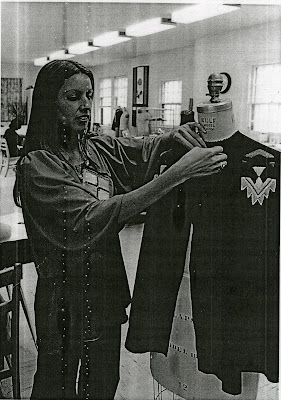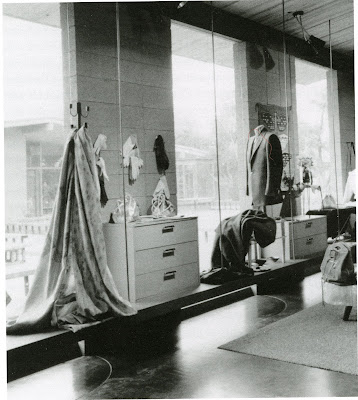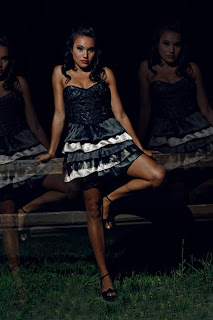
Angela De Montigny: 'SKINS & STONES adorn my bones and style is what defines me'
By Hollie Nash
Inspired by native culture and women’s contemporary lifestyles, Canadian designer Angela DeMontigny is making a fundamental mark in the fashion industry. Almost 13 years ago, DeMontigny recognized the unmet potential for Aboriginal designs and went with it. Such an opportunity allowed her to not only incorporate the artistic traditions she had learned growing up, but to interpret these elements in a modern way.
Angela started sketching at the age of twelve and was constantly engulfed in the fashion industry.Be it through reading the latest fashion mag or creating her own designs- she adored every aspect. Angela feels that fashion is about personal expression, “[Fashion is] a way of expressing the many aspects of an individual through clothing.” She also feels it is important to include a specific and effective message in each of her collections. “It changes from each collection,” she states, “but usually the message is that you can dress yourself as a strong, modern person in a way that fits your personality and lifestyle.”
Her trademark is hand painted symbols and beaded accents-an inherent skill that has been handed down from her native ancestors for hundreds of years. Only the finest leathers, suede and sheerings are used to develop the finished garment and whether you are in the market for men or women’s clothing, DeMontigny got you covered, literally.
Her latest collection incorporates her favorite trend of this season, rocker chic. Leather, lots of metal studs and hardware, fringe and various fur garments can be seen in her clothing line. The unique concept of Angela’s designs is that they are extremely wear-able. They have a slight ‘edge’ or sexiness to them but at the same time, they are appropriate for the office, comfortable and possess a certain je ne sais quoi that adds to the versatility of the clothing. What else could you ask for?
Angela’s success has flourished throughout the years, and her designs have gotten a lot of coverage already in 2010. Most recently at the Aboriginal Fashion Week, she produced and debuted her new collection in Vancouver, BC during the first week of the Olympic Games. One of Angela’s proudest moments to date was when Canadian Native Olympian, Waneek Horn-Miller sported a diamond gorget created by DeMontigny. She believes, “the diamond piece will kick start a legacy fund for Aboriginal Youth in design."
Angela DeMontigny Clothing and Accessories can be found in boutiques in major city centers including Montreal, Toronto, and Calgary. Her designs are also sold internationally in the Netherlands, Germany, Italy and America. She currently has two specialty boutiques in the US, one in Wyoming and Colorado; however she plans to expand in the near future.
“Do not go where the path may lead, go instead where there is no path and leave a trail.” This quote certainly relates to the success of Angela DeMontigny as she paves the road for aspiring Aboriginal designers everywhere.
Booking orders for Fall 2010 now - if you'd like to make an app't to view the entire line of fashion for men and women or accessories, I can be reached at: 905-304-8952 or cell: 905-818-2751. For recent press, media coverage please contact Lee Arden Lewis at: 613-966-4078.
Images
Angela De Montigny
Fashion Writer
Hollie Nash
[see original article here]











 (Wendy Ponca's dress designs. Dress on right features the important Osage spider symbol)
(Wendy Ponca's dress designs. Dress on right features the important Osage spider symbol)

















 (
(



 (
(




 (Hair: Andres Copeland - Make up: Marisol Garcia - Photos: Thoshography)
(Hair: Andres Copeland - Make up: Marisol Garcia - Photos: Thoshography) 
